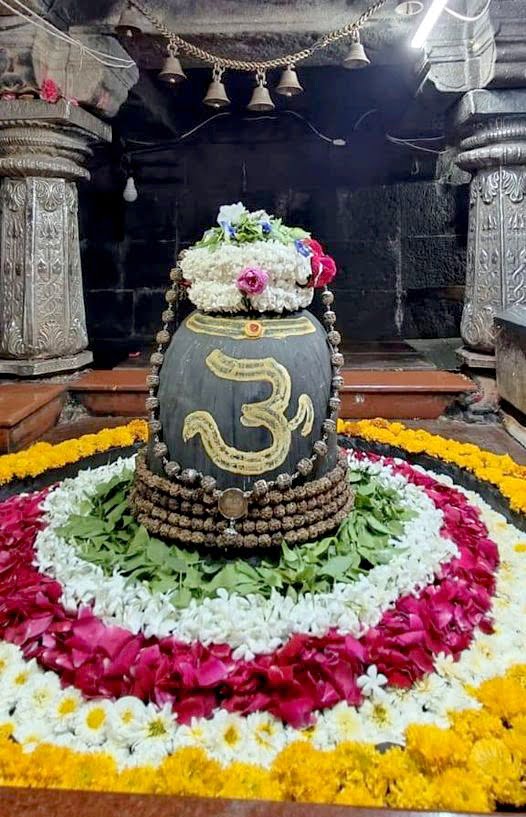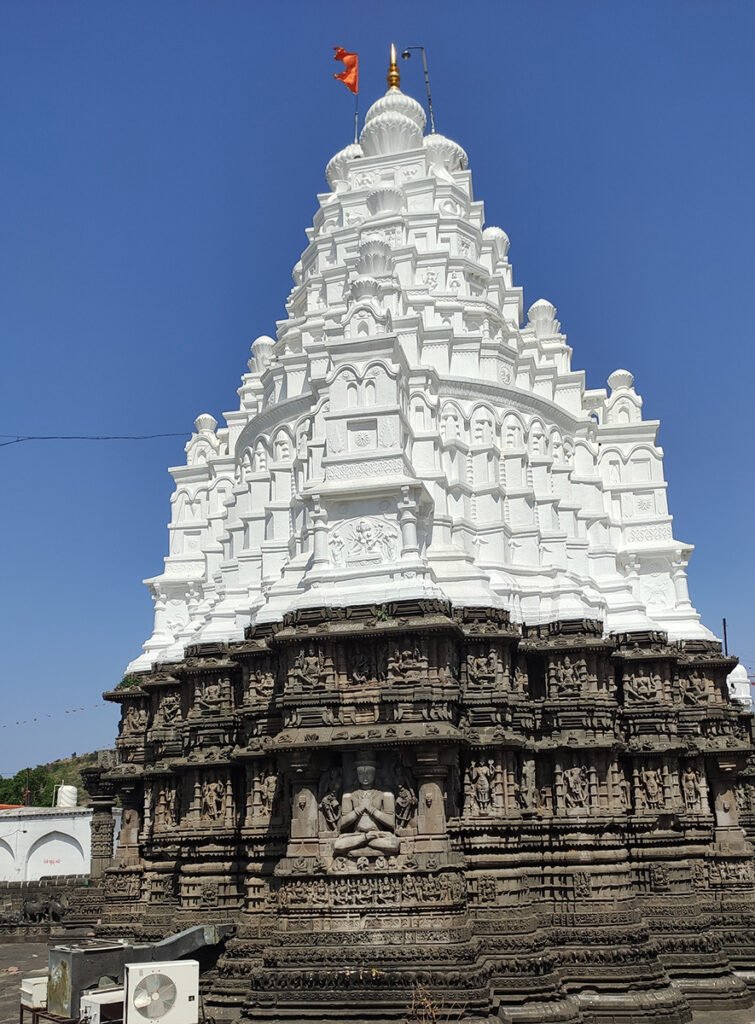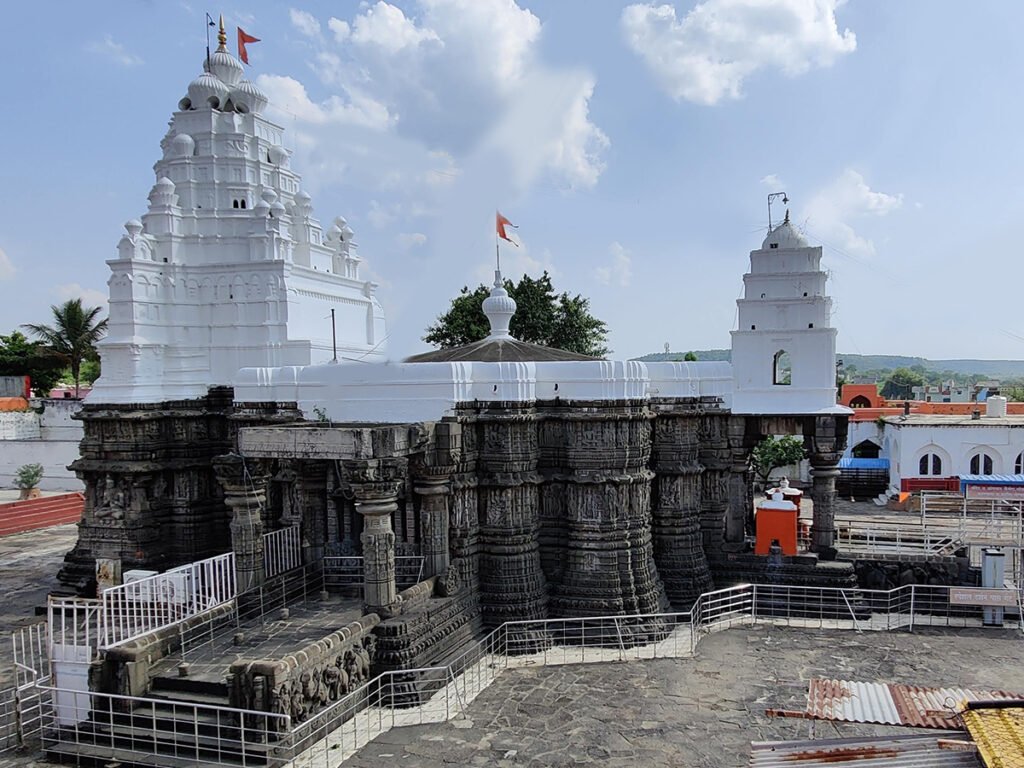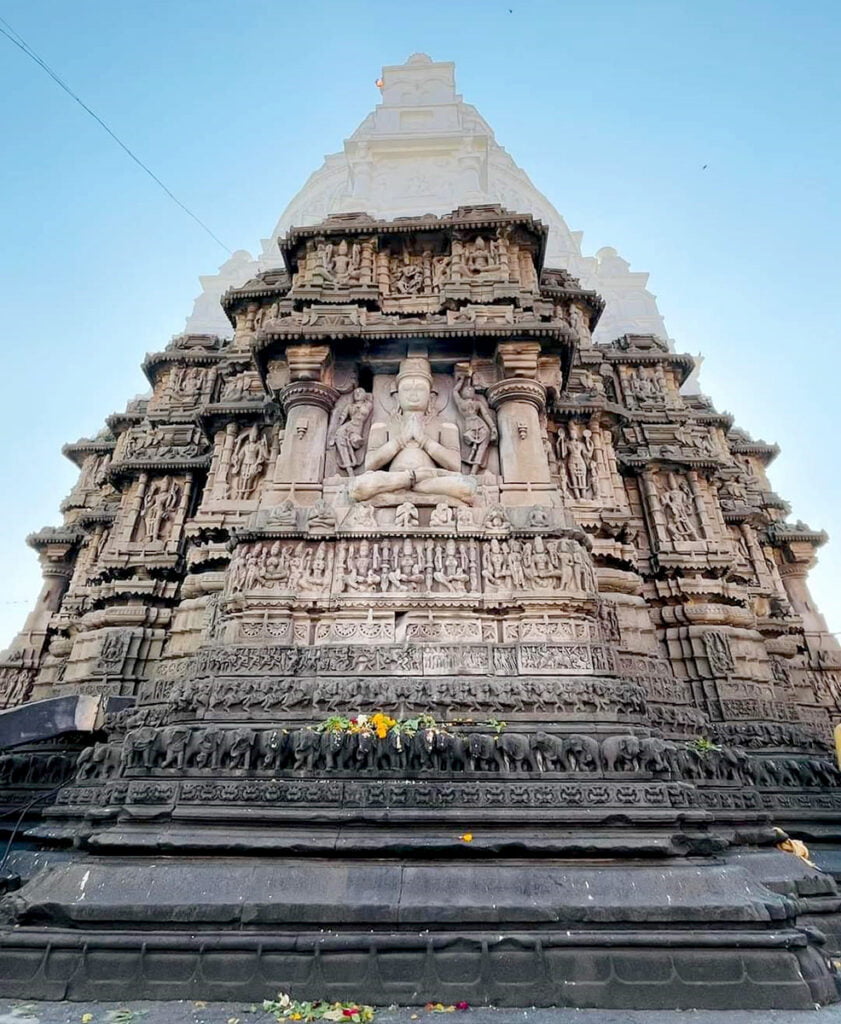Aundha Nagnath Temple: 8th Jyothirling with Divine Serpents
Aundha Nagnath Temple is one of the twelve Jyotirlinga temples dedicated to Lord Shiva. It is located in the Hingoli district of Maharashtra, India. The temple is believed to be over 1,500 years old, and is said to have been built by Yudhishthira, the eldest of the Pandavas.

“Amardakamidam Kashi Dughdeyamkila Jahnave!
Vishwesho Naganadhoyam, Bhawani Kanakeshwara!!”
Contents
- 1 Significance Aundha Nagnath Temple:
- 2 Legend of Aundha Nagnath Temple:
- 3 Architecture of Aundha Nagnath Temple:
- 4 Places to visit near Aundha Nagnath Temple:
- 5 FAQ:
- 5.0.1 What is the Aundha Nagnath Temple?
- 5.0.2 When is the Aundha Nagnath Temple open?
- 5.0.3 How can I book aarti tickets?
- 5.0.4 What is the dress code for visiting the Aundha Nagnath Temple?
- 5.0.5 What items are not allowed inside the Aundha Nagnath Temple?
- 5.0.6 What is the best time to visit the Aundha Nagnath Temple?
- 5.0.7 Where can I stay near Aundha Nagnath Temple?
- 5.0.8 What are the origins of the Aundha Nagnath Temple?
- 5.0.9 What are the main features of the Aundha Nagnath Temple?
- 5.0.10 What are the important festivals celebrated at the Aundha Nagnath Temple?
- 6 How to reach Aundha Nagnath Temple:
- 7 Google Maps:
Significance Aundha Nagnath Temple:
When Dakshaprajapati performed yagna, Lord Shiva was not invited. As he is one of the three Kalapurushas, and without his presence, no yagna can be performed, goddess Parvathi urged her father to invite Lord Shiva. However, her father insulted him and said no. Unable to tolerate this slight, she jumped into the yagnakunda (holy fire) and gave up her life. This instance made Lord Shiva angry with Dakshaprajapati and filled him with sorrow and unhappiness. He left Kailash and started wandering in the forests, eventually settling in Amardaka, a large ravine. Even there, he faced insults and felt dejected, which led to him turning his body into ashes.
Read More>> Trimbakeshwar Jyotirlinga Temple
Legend of Aundha Nagnath Temple:
During the period of vanvas (life in the forest) of the Pandavas, their cows used to drink water on the riverside and offer their milk in the river. Once Bhima observed this miracle and informed all his brothers. The Pandavas started removing water and were shocked to observe the water boiling in the middle of the river. Bhima attacked the river with his mace and found blood oozing out, and discovered a Shiv Linga.
On the West Coast, there used to live a demon named Daruk who used to harass the hermits. He would imprison them on an island and torment them. Among these prisoners, there was a Shiva devotee named Supriya who never ate food or drank water without first worshiping Lord Shiva. When Daruka heard about this, he ordered his guards to execute Supriya. However, Supriya started praying to Shiva for her life, and Shiva appeared, destroying all the demons and freeing the island from Daruk’s control.
According to the Vamana Purana, there lived a group of sages in a forest worshipping Lord Shiva. Once the lord decided to test the divinity and patience of the sages and came to the forest in the form of a digambara (nude ascetic) wearing only snakes. Upon seeing the lord’s body, the wives of the sages were attracted and left their husbands. The sages became frustrated and lost their patience and cursed the lord for losing his linga. As a result, the Shiva linga fell on the earth, causing the entire world to tremble. Lord Brahma and Vishnu appeared and urged Lord Shiva to save the earth from destruction. The Lord granted their request and gave the boon of saving the earth in the form of the Jyotirlinga, which later became a place of worship for the nagas and was called Nageshvara or Nagnath.
During the reign of Aurangzeb, he wanted to demolish the Shri Nagnath Temple as he was intolerant towards Hinduism. Along with his men, he tried to demolish the temple, but suddenly thousands of bees came out of the temple and attacked his army. The demolition work was left half done, and devotees rebuilt the demolished portion.
Read More>> Sacred Kashi Vishwanath Temple: 11th Jyotirling of Liberation

Architecture of Aundha Nagnath Temple:
The temple architecture is built in such a way that the stones of the temple wall and corridor are very strong. They still reside strongly from the period of Pandavas. Also, we find no Nandi in front of Mahadev. We separate temple for Nandi at the backside apart from this we also have Ganapati, Dattatreya, Nilakanteshwar, etc. Idols. In and around we find 108 Shiva temples and 68 shrines filled with the beauty of nature. We find snakes opening their hoods and dancing near ShivLinga and drink milk offered to them.
Here are some of the key features of the Aundha Nagnath Temple architecture:
- Hemadpanti style: The temple is built in the Hemadpanti style of architecture, which is characterized by its intricate carvings and red sandstone construction.
- Fortified enclosure: The temple is surrounded by a fortified enclosure, which is a common feature of Hemadpanti temples.
- Three main parts: The temple complex has three main parts: the garbhagriha (sanctum sanctorum), the sabha mandapa (assembly hall), and the ardha mandapa (half hall).
- Elaborate carvings: The temple is decorated with a variety of elaborate carvings, including depictions of Hindu gods and goddesses, animals, and geometric patterns.
- Religious significance: The Aundha Nagnath Temple is a place of great religious significance for Hindus. It is believed that worshipping at the temple can help devotees to attain moksha, or liberation from the cycle of birth and death.
Read More>> Sri Puri Jagannath Temple: The Lord of the Universe

Places to visit near Aundha Nagnath Temple:
Parli Vaijnath Temple: Parli Vaijnath Temple, dedicated to Lord Shiva, is another Jyotirlinga temple and is located about 40 kilometers away from Aundha Nagnath. It’s a significant pilgrimage site for Lord Shiva devotees.
Hemadpanthi Temples: The Hingoli district is known for its Hemadpanthi style temples. These temples feature unique architectural designs and are culturally significant. You can explore these temples in the nearby towns and villages.
Aundha Fort: Aundha Nagnath has an old fort that you can visit. While the fort itself may not be very well-maintained, it offers a glimpse into the historical significance of the region.
Bhimashankar Wildlife Sanctuary: Located at a distance of about 100 kilometers from Aundha Nagnath, the Bhimashankar Wildlife Sanctuary is home to a variety of wildlife species, including the Indian giant squirrel. It’s a beautiful place for nature lovers.
Pilgrimage Sites: The Hingoli district and its neighboring areas have several other temples and religious sites that you can visit, offering a glimpse into the local culture and religious traditions.
Hingoli: The district’s headquarters, Hingoli, is a small town with its own share of temples and historical sites. You can explore the town, its markets, and local cuisine.
Jawala Nagnath Temple: This temple, dedicated to Lord Shiva, is not very far from Aundha Nagnath and is another place of religious significance in the region.
Read More>> Danteshwari Temple Dantewada

FAQ:
What is the Aundha Nagnath Temple?
The Aundha Nagnath Temple is a Hindu temple dedicated to Lord Shiva, located in the Hingoli district of Maharashtra, India. It is one of the twelve Jyotirlinga temples, where Lord Shiva is worshipped in his purest form.
When is the Aundha Nagnath Temple open?
The Aundha Nagnath Temple is open all 365 days of the year, from 5:00 AM to 10:00 PM.
How can I book aarti tickets?
There are no aarti tickets required to visit the Aundha Nagnath Temple. However, there are a limited number of seats available for the main aarti at 6:00 PM. These seats can be booked online or at the temple counter.
What is the dress code for visiting the Aundha Nagnath Temple?
Devotees are requested to dress modestly and respectfully when visiting the Aundha Nagnath Temple. Men are advised to wear dhotis or kurtas, and women are advised to wear saris or salwar kameezes. Short skirts, tank tops, and other revealing clothing are not permitted.
What items are not allowed inside the Aundha Nagnath Temple?
The following items are not allowed inside the Aundha Nagnath Temple:
- Electronic devices, such as mobile phones, cameras, and laptops
- Leather goods, such as belts and shoes
- Weapons
- Food and drinks
What is the best time to visit the Aundha Nagnath Temple?
The best time to visit the Aundha Nagnath Temple is early in the morning or late in the evening, when the crowds are smaller. However, the temple is open all day long, so you can visit at any time that is convenient for you.
Where can I stay near Aundha Nagnath Temple?
There are many hotels and guesthouses located near Aundha Nagnath Temple. You can find accommodation to suit all budgets.
What are the origins of the Aundha Nagnath Temple?
The Aundha Nagnath Temple is believed to have been built by the Pandavas, the heroes of the Mahabharata epic. According to legend, the Pandavas were exiled from their kingdom for 14 years. During their exile, they visited the Aundha Nagnath Temple to seek the blessings of Lord Shiva.
What are the main features of the Aundha Nagnath Temple?
The Aundha Nagnath Temple is a beautiful and imposing structure. The main temple is built in the Dravidian style of architecture. The temple has a tall shikhara, or tower, which is topped by a golden dome. The temple also has a number of smaller shrines dedicated to other Hindu deities.
What are the important festivals celebrated at the Aundha Nagnath Temple?
The Aundha Nagnath Temple celebrates a number of important festivals throughout the year. The most important festival is the Mahashivratri, which is celebrated in February or March. Other important festivals include the Shivratri, which is celebrated in February or March, and the Naag Panchami, which is celebrated in August or September.
How to reach Aundha Nagnath Temple:
By Air:
- The nearest major airport to Aundha Nagnath Temple is Chikkalthana Airport in Aurangabad, Maharashtra, which is approximately 170-180 kilometers away. You can take a flight to Aurangabad from major Indian cities, and from there, you’ll have to arrange for a taxi or other local transportation to reach Aundha Nagnath Temple.
By Train:
- The nearest railway station to Aundha Nagnath Temple is Parbhani Railway Station, which is approximately 20 kilometers away. You can reach Parbhani by train from various major cities in Maharashtra and other parts of India.
By Road:
- Aundha Nagnath Temple is well-connected by road, and you can reach it by bus, taxi, or your own vehicle.
- If you are traveling from Parbhani, it’s a short drive to the temple. You can hire a taxi or take a local bus from Parbhani to Aundha Nagnath.
- If you are coming from Aurangabad, you can hire a taxi or take a bus to reach Aundha Nagnath. The journey will take a few hours.
- If you’re coming from other major cities like Mumbai or Pune, you can take a long-distance bus to Parbhani or Aurangabad and then proceed to Aundha Nagnath by a local taxi or bus.
